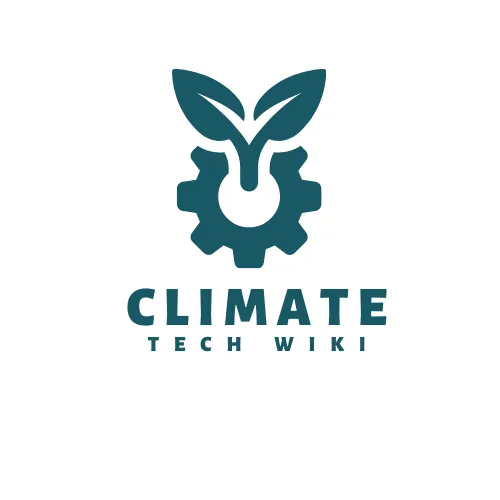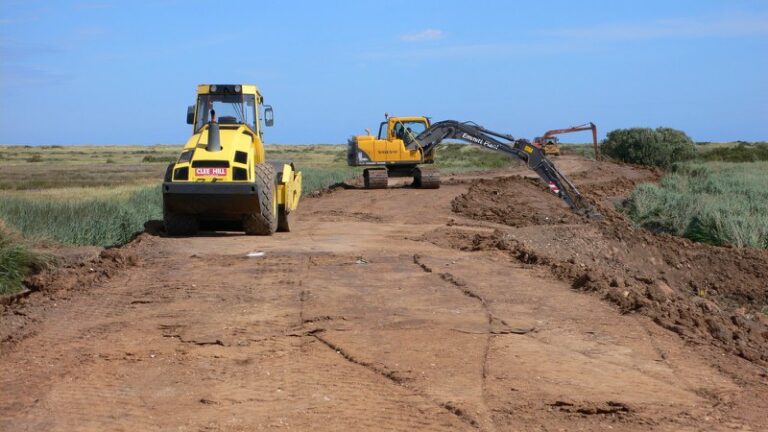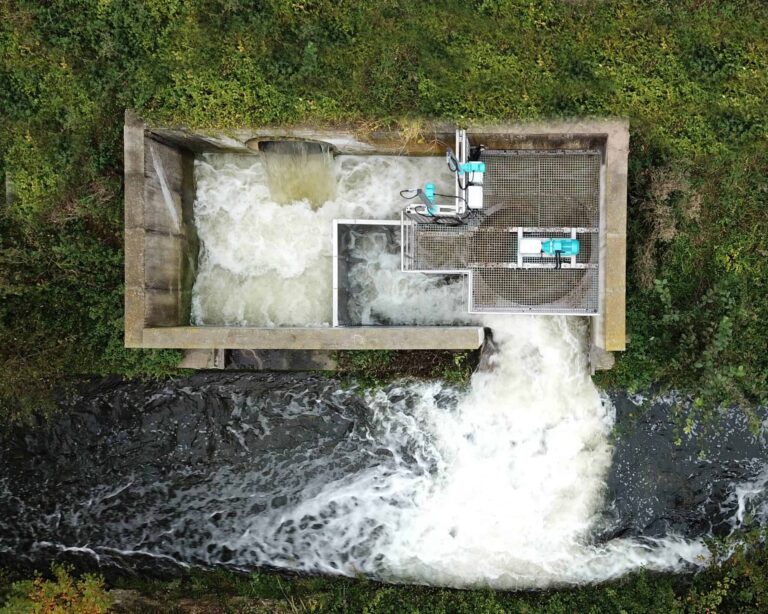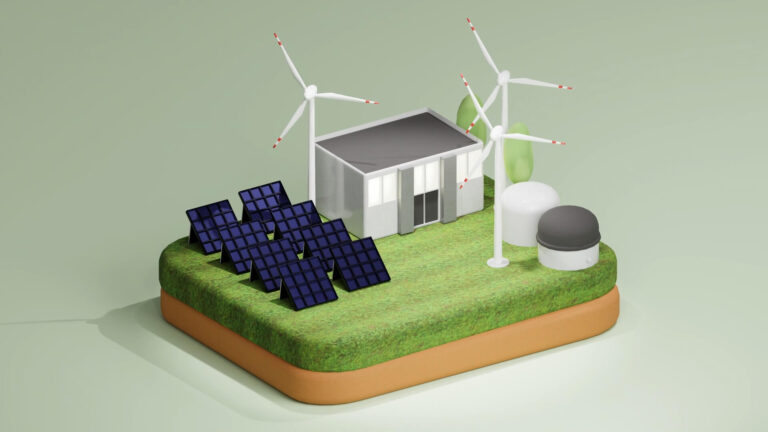By combining different production sources, hybrids can satisfy energy needs in remote, faraway places like communication towers, military bases, islands, and rural towns cut off from main power grids. They tap what each method does best for reliable electricity even where connecting new power lines may be impossible or too costly.
While each approach on its own has limits, hybrids overcome these. Various technologies can generate electricity under different conditions, filling in when others can’t due to lack of fuel, wind, or sun.
Wind-PV hybrid system
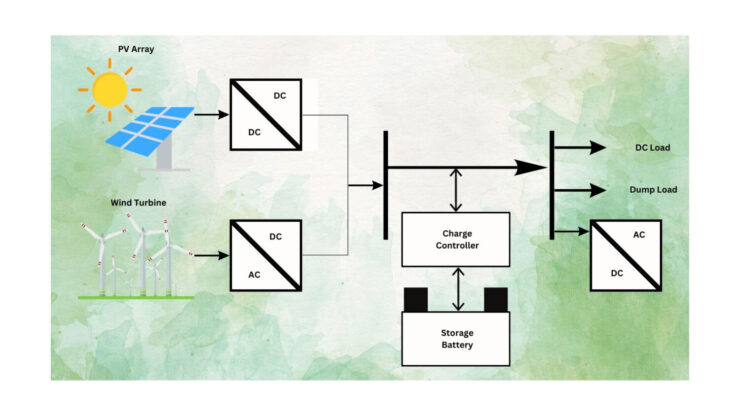
A solar-wind hybrid system includes the main parts of solar PV panels and a wind turbine, a DC-AC inverter, batteries, a charge controller, and backup power for battery storage. Solar panels change sunlight directly into current electricity using semiconductor principles like diodes and transistors. Panels can be wired together into arrays, raising the voltage and current available, while keeping the same power output.
A typical solar panel is around 0.5 square meters and produces around 75 Watts of DC power in full sun. Panels cost about €290 and last over 20 years. The wind turbine makes AC electricity from the wind that the inverter changes to DC to charge the batteries. When the batteries are full, excess power can run backup generators. The charge controller ensures batteries charge properly and don’t overfill. It regulates how much solar, wind, and backup power reaches the batteries.
The solar panels and wind turbine charge batteries through a charge controller that keeps them from overfilling. Most modern controllers do this electronically by adjusting the width of short DC pulses to the batteries using a method called pulse width modulation or PWM.
Backup power can come from either a generator or the main electric grid during times of very high use or low renewable output from the solar-wind hybrid. This ensures power is always available even if wind and sun drop off.
The controller’s PWM pulses carefully manage how much energy from the solar, wind, and backup supply reaches the batteries from moment to moment. By preventing overcharging, it extends battery life so the hybrid reliably powers homes for decades.
Wind-Diesel Hybrid Systems

By joining a renewable wind source with diesel backup, communities far from main electric lines or in areas with weak grids can benefit from locally made power.
In places cut off from large power stations, energy costs affect families and businesses. Hybrids tap wind free of fuel costs, lowering expenses.
Diesel generators kick in when the wind slows to keep the lights on. This ensures a reliable supply even on calm days.
The wind turbine uses air flow to generate alternating current. When the wind blows strong, this electricity goes straight to homes and facilities.
During low winds or high use, the diesel motors take over generating without wasting fuel when wind would do the job. Together they provide constant power from two sources.
Fuel Cell-Turbine (FCT) Hybrid Systems

Fuel cells use hydrogen or hydrogen-rich fuel with oxygen from the air to create power through electrochemical reactions without burning. This prevents pollutants like NOx, SOx and particulates, boosting efficiency. Joining a turbine brings even more gains.
In direct mode, the fuel cell serves as the combustor for the turbine. Leftover fuel in the hot fuel cell exhaust mixes with extra oxygen for an exothermic reaction raising temperatures further. Both produce electricity, and the turbine provides compressed air and preheats fuel/air in a recuperator heat exchanger.
Indirectly, the recuperator transfers exhaust heat to compressed inlet air powering the turbine. The expanded air then feeds the fuel cell. This uncouples turbine and fuel cell pressures, letting communities choose the best turbine.
Challenges include matching pressures/flows and controlling startup, shutdown, emergencies, and flexible operations.
How does this technology contribute to socio-economic development and environmental protection?
Renewable sources like wind and solar used in wind-solar hybrids are sustainable since wind and sunshine are freely found in nature. And hydrogen, used in fuel cells, could be the most abundant fuel as it’s part of water molecules.
In fuel cells, hydrogen converts to electricity without burning. It can also power rockets like the space shuttle through combustion. Hybrids linking fuel cells and gas turbines achieve extremely high efficiency and low emissions.
All hybrids combine generation and storage, producing extra power when the sun or wind is strongest. Stored power ensures supply around the clock. This will help secure sustainable energy for our future.
Unlike diesel generators, coal power, or gas burning, renewables make heat and electricity without greenhouse gases. Using more renewables can greatly cut these emissions warming our planet. Studies show wind turbines are the cleanest while fuel cells are environmentally friendly.
Yet on their own, wind or fuel cells may not always deliver power to remote areas. Together though, they can become more dependable.
